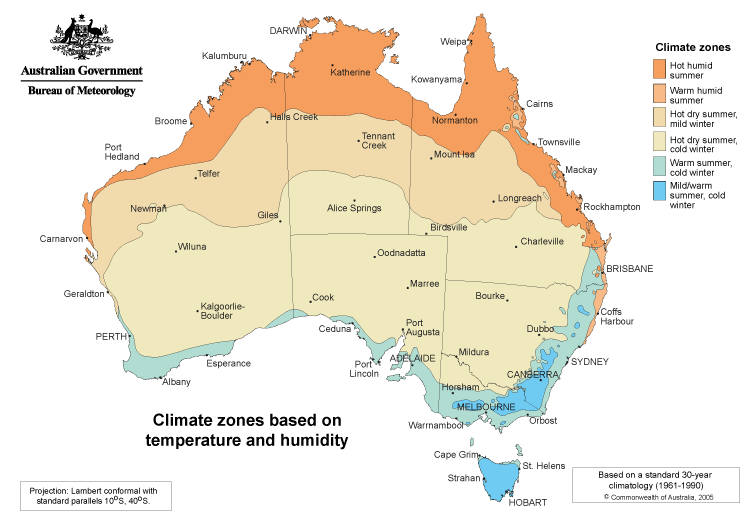Following plant hardiness and climate zones can help you establish the most appropriate plants for your garden.
Australian Climate Zones
Australia includes six major climate zones which can be broken down into twenty seven sub-groups. The major zones include Equatorial, Tropical, Subtropical, Desert, Grassland, and Temperate.
The Australian Bureau of Meteorology refers to these categorisations as Köppen maps and are based mainly on native vegetation type with the sub-groups taking into account rainfall and temperature.
Temperature and Humidity Maps
Slightly simpler are the Bureau’s Temperature and Humidity zone maps. This method classifies six key zones ranging from Tropical to Cool Mountain:
- Hot Humid Summer (Tropical)
- Warm Humid Summer (Subtropical)
- Hot Dry Summer, Mild Winter (Arid)
- Hot Dry Summer, Cold Winter
- Warm Summer, Cold Winter (Temperate)
- Mild/Warm Summer, Cold Winter (Cool / Mountain)
Taking these zones into account, you can check out resources, such as Gardenate, for when and what you expect to plant certain species in your garden.
Plant Hardiness Zones for Australia
Plant hardiness maps originate from the United States Department of Agriculture (USDA) and are based on average minimum temperatures.
For instance, if a plant is categorized as Zone 10 it should be able to survive temperatures as low as -1°C to +4°C. However, the Australian winter is much warmer than most of North America, so Iain Dawson (a former researcher at the Australian National Botanic Gardens) modified the zoning to better match Australian conditions and temperature ranges.
For more information on Australian and US plant hardiness zones checkout Iain Dawson’s article on the Australian National Botanic Gardens website.
The Australian Bureau of Meteorology is a great resource for climate data if you’re not already sure about your current climate zone. You can also identify solar exposure, sunshine duration and average rainfall for your area, so be sure to check it out when deciding what to plant in your garden.


